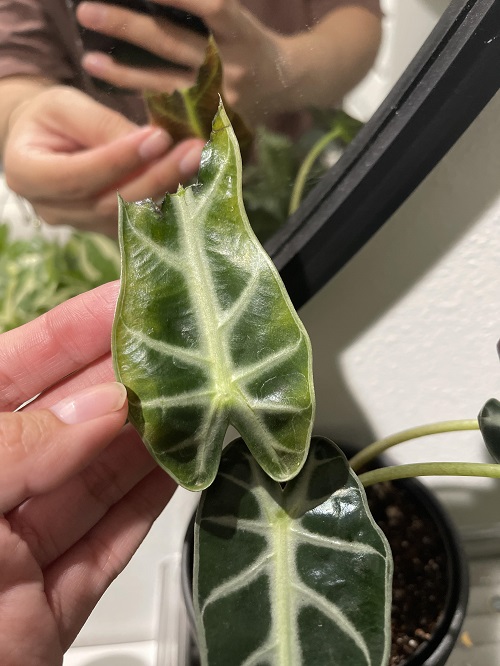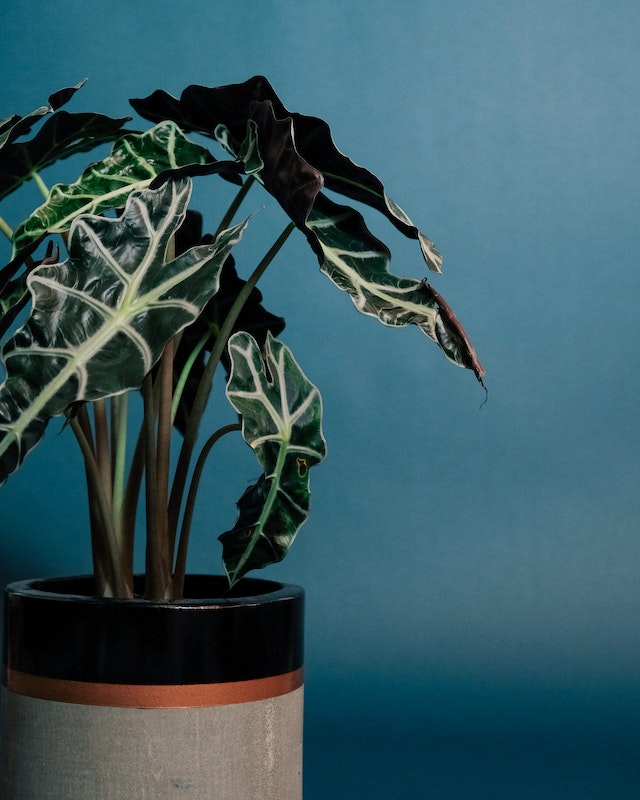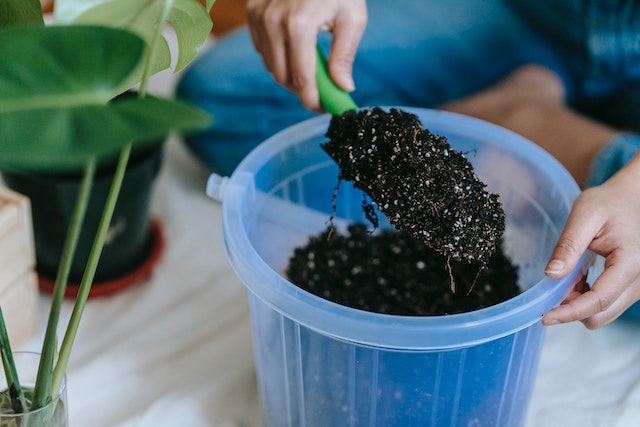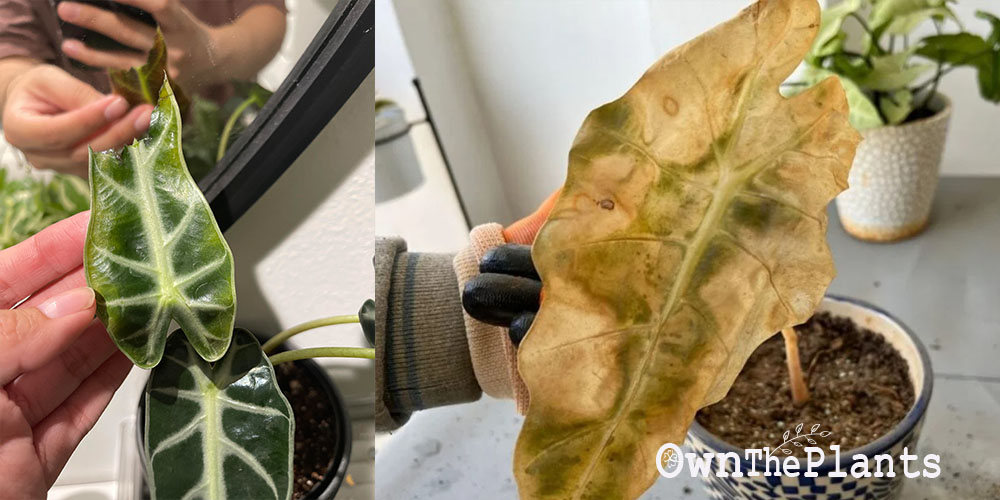Undeniably, Alocasias are one of the most popular houseplants around the world because of their premium, exotic elegance.
They automatically make any space summery and vibrant. All thanks to their stunning, gorgeous foliage.
However, it is not all the time that the leaves of your plants are as beautiful as they are. Even though they are easy to care for and are low-maintenance, there are times that you might find yourself looking at mushy leaves of your Alocasias.
Having mushy leaves can be due to many factors, may it be environmental or a lapse on your plant care.
No matter the reason, it is best that you identify the root of the mushy leaves of your plant, since different causes need different fixes.
In this article, we will help you get into the root cause of your problem as we list down all the possible causes of mushy leaves on Alocasias.
We will also offer you easy and effective solutions so that your plants will look lively and healthier than before.
What Causes Mushy Alocasia Leaves?
The mushy leaves in Alocasias mask the beauty of the plant that they are best known of.

These mushy leaves are signs of stress that could be seriously detrimental to your plant. In worst conditions, these might be caused by something that can eventually kill your plant if not taken care of.
Mushy leaves in Alocasias occur due to various reasons such as overwatering, insufficient lighting, incorrect pot size, poor drainage system, and air circulation, among others.
We will delve into them one by one to fully understand the problem and rightfully get to what is really causing the mushy leaves of your Alocasia.
Overwatering
One of the leading causes of many plant problems is overwatering. This is also one of the common reasons, if not the most, why your Alocasia leaves become mushy.
Mushy leaves due to overwatering is often accompanied by limping and yellowing leaves. When you observe these symptoms in your Alocasia, you can be sure that this is a case of overwatering. You gave more water to your plant than the required quantity.
Overwatering are due to various reasons, and not exclusive only to frequent watering.
Here are some of the leading causes that you should also check:
- Poor, compact soil that does not drain water well
- Pot size is too large and retains more water than what the plant needs
- Poor drainage system that does not let excess water to flow out; less drainage holes or holes being obstructed with debris
Overwatering is a serious plant problem that does not only manifest to mushy leaves, but also, when left unattended, can lead to root damage.
This root damage can lead to root rotting, which will eventually kill your beautiful plant.
How Do You Fix and Prevent Overwatering?
Problems due to overwatering is not impossible to fix. To salvage your plant from the horrors of overwatering, you can do the following steps:
- Rectify your watering routine and cut down when you notice soil remains wet for a long time.
- Tilt your Alocasia pot to the side to drain off excessive water.
- Place your plant in a bright, sunny spot with indirect lighting. Allow the growing medium to be dry.
- If Alocasia remains extremely soggy, take it out and spread its roots and soil to dry out.
- Remember to always use pots with proper, working drainage holes.
- Use correct size of pots and do not use excessively large ones.
- If your soil is heavily compacted, mix it with perlite, coco peat, sand, and pumice to make it light and airy.
- Understand your Alocasia’s water requirements as it changes with season. In summer, a lot of water is needed. In winter, less watering is required as the plant goes dormant.
Root Rotting
Although this is also related to overwatering problem, root rot can also cause the mushy leaves of your Alocasia.
Harmful bacteria and pathogens can attack the healthy roots of your Alocasia, leading to root rot.
The healthy roots become mushy and brown, and then slowly die, making the rest of your plant wilting and mushy.
Growth of bacteria and other pathogens are caused by the following:
- Overwatering which creates a severely moist environment.
- Poor soil quality, drainage, and aeration.
- Unsterile gardening tools, especially those tools which are in contact with other pathogens, thereby spreading these harmful organisms from a plant to another.
- Buying already infested plants.
How Do You Treat Root Rot?
Treating root rot is a bit of a challenge. Although it is not impossible to fix, if the condition is already at a worse condition, the plant is already beyond saving.
However, if it is found on its early stages, root rot can be mitigated easily.
To save your Alocasia plant from root rot, here are some steps you can follow:
- Remove the plant out from its pot and wash roots under running water.
- As careful as you can, prune all affected, mushy roots using a sterilized cutting tool.
- Disinfect the cutting tool you used before and after using to prevent the spread of pathogens.
- Apply fungicide on the remaining healthy roots.
- Discard the old soil mix properly and prepare a fresh one.
- Repot your Alocasia in a new container and water it properly.
Infestation of Pests
Another cause of mushy leaves in your plant is pest infestation. Alocasias are known to be pest magnets and so, this is a common problem that you must prepare for.
The common pests of your Alocasia includes spider mites, scales, mealybugs, and aphids, among others.
Your plants are a comfortable nesting place for your pests. These pests suck off the energy and nutrients of your plants. They stick to stems and leaves and suck plant juices, resulting to a droopy and mushy Alocasia.
How Do You Remove Plant Pests?
Pest infestation is easy to fix, especially if observed during its initial stages. To get rid of these pests, you can follow the steps below:
- Isolate infested plants from others to avoid the spread of pests.
- Wash your plant and prune off infested parts using a sterilized pruner. Sterilize the tool before and after use.
- Apply Neem oil, or other horticultural oils, three to four times a week. Neem oil is a safe and organic pesticide that is highly effective.
- If Neem oil provides no effect, use strong pesticides.
- Keep your plant in a well-aerated and bright space. Pests thrive in humid and dark locations.
- Always check your newly-bought plants for pests.
Insufficient Light

Your Alocasia plants thrive best in indirect, bright light. Without sufficient light, water has the tendency to remain in the pot and soak your plants.
Leaving your plant in a damp, soggy soil increases the risk of overwatering and root rot problems, which leads to a mushy and droopy plant.
How Do You Provide Enough Light to Alocasia?
Providing sufficient light to your Alocasia outdoors is much easier than providing it indoors.
When planting an Alocasia outside, just don’t forget that it does not like direct sunlight as it can scorch their leaves. Look for a spot that gives your plant bright, filtered light.
If you keep your Alocasia indoors, you must need to plan properly where to put your plant as indoor spaces tend to have low light. Beside windows are the best spot for your indoor plants.
If the light is still not enough, you may use artificial lights to augment the necessary light required for your plant.
Incorrect Pot Size
It may be often neglected but the size of your plant’s pot does affect your plant in a larger way than you imagine.
Proper pot size is important for a healthy growing Alocasia. Incorrect size of pots can indirectly lead to several problems, including mushy plant leaves.
If you have an excessively large container, the risk of overwatering and root rotting is high.
A large pot does not drain excess water well and keeps the soil moist and damp for a longer time. The plant will be soaked in water, leading to wilted and mushy foliage.
How Do You Choose the Right Pot Size For My Alocasia?
If you plan to repot your Alocasia, the pot should not be two inches larger than its previous pot. As the plant grows larger, increase the pot using the ideal rule.
However, if you don’t want changing pots, you may opt to just trim down excess plant growth and propagate it into smaller containers.
Poor Draining System
A lot of plant owners sacrifice the need of drainage holes in exchange of decorative pots. This is detrimental to plants as it causes saturation of water in the soil, making the plants overwatered.
Overwatering, as we now know, leads to different problems such as mushy leaves.
How Do You Make Your Pots Well-Draining?
A well-draining pot is very essential for a healthy growth of plants. You can do the following to improve the draining system of your plant:
- Empty all water reservoirs, such as saucers or cache, so that water does not remain stagnant and accumulated.
- NEVER use containers or pots that do not have drainage holes.
- You can cover holes with pebbles or mesh so that the soil remains intact, but still allowing water to seep through.
Poor Potting Soil Quality

A proper growing medium is very important for plants to thrive. Wrong quality of growing medium means unhealthy, sickly Alocasia.
Your Alocasias best thrive in loamy, airy, well-draining soil.
A heavily compacted soil will not allow roots of your plants to breathe. This type will also hold excessive water, which leads to yellow and mushy Alocasia.
What is the Proper Growing Mix for Alocasia?
Your Alocasias love a well-draining soil, that is light and airy, but at the same time, capable of holding moisture.
There are a lot of organic materials that you can mix to your soil to achieve this proper mixture. Here are some of the soil recipes you can follow:
- Equal parts of soil, peat moss, perlite, and sand
- Equal parts of soil, sand, fir bark, and vermiculite, plus a few charcoal
- Equal parts of perlite, coco coir, and orchid bark
You might also like: Lush Tropicals: What Is The Best Soil For Philodendron?
How Do You Prevent Mushy Leaves of Alocasia?
As they all say, prevention is always better than cure.
Here are some precautions that you must consider to prevent your Alocasias from having mushy leaves:
- Alocasias are tropical houseplants, hence they need warmth and dislike extremely low temperatures.
- They cannot withstand direct light, so avoid putting them in directly bright spaces.
- They are not cold-tolerant, so keep them indoors during winter season.
- Check for pests regularly.
- Know the watering needs of your plant as it changes with weather and seasons.
Final Thoughts
Mushy leaves can be caused by various reasons, and like every problems you encounter, may it be a garden-related one or, life in general, it is best to take a step backward and observe closely the situation at hand.
Remember always that the best fix is the one that solves the underlying cause.
Do not ever worry if you encounter this problem with your Alocasia. Take it as a learning curve. This problem will just make you know your Alocasia better.
We would like to hear your experiences with Alocasias in the comment section below. Feel free to drop anything, and let others know about your gardening story!
